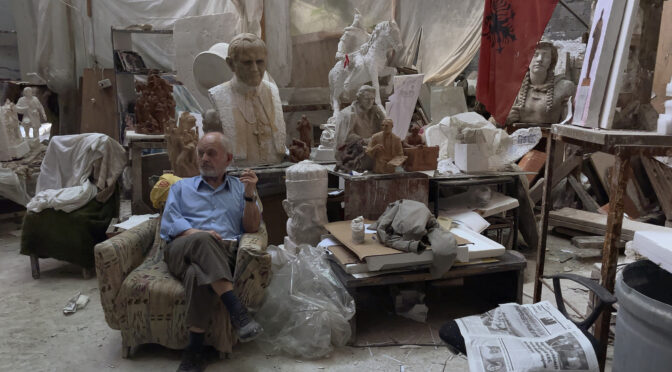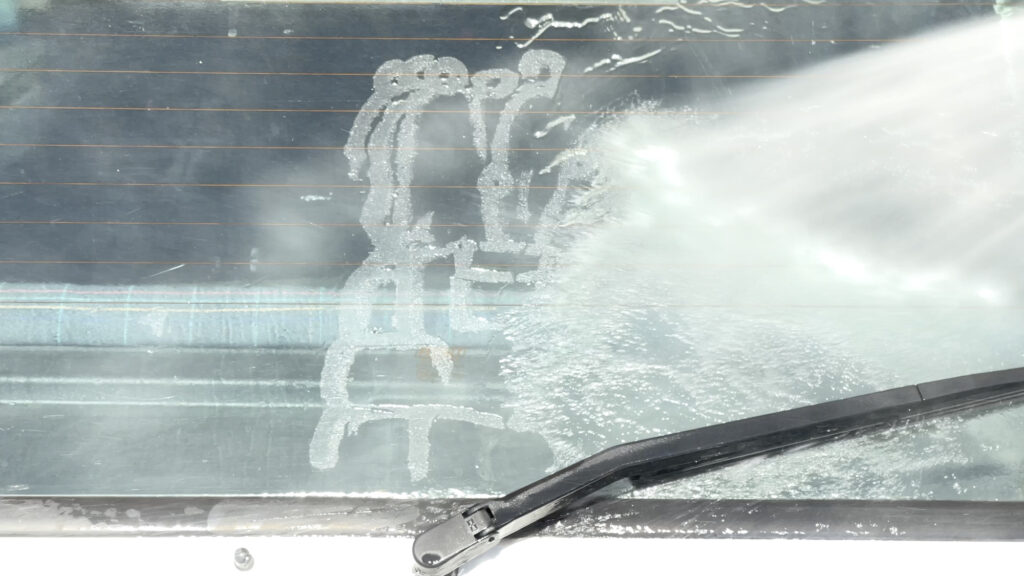Article by Asia Lupo
Translation by Rebecca Lorusso
The sea, a mound of earth and some buildings are the opening images of Anulloje Ligjin, a documentary that talks about the mysterious reality of a country which has been isolated from the rest of the European continent for 40 years. Albania, in this film, is shown in all its desolation and inconsistencies, but also in its profound creative energy and resistance.
Through a road movie on board of an old Fiat Panda, the story of the monuments seems to tell much about the past of the country, in a continuous political and cultural transition. The style of Socialist Realism, which characterized the communist dictatorship of Enver Hoxha, becomes the opportunity to reflect on the meaning of art and its connection to politics, especially in relation to a regime that suppressed any kind of freedom for 40 years, excluding the country and inhabitants from the rest of the world.
Bellomo interviewed the artists who created works from that period, such as the colossal statue of the dictator, which later became the symbol of the country’s liberation in 1991, when it was pulled down. Luan, fellow traveler of the director, talks about an Albania that entered in the capitalist and liberal vortex of globalization and implemented a policy which follows the logic of “throwing out the old”, whereby architecture and monuments are destroyed to be completely rebuilt according to aesthetics that follow a new political direction. At the same time, the words of the artists who had collaborated on the construction of certain works under the regime, contribute to raise the subject to an intellectual level. One of the three artists who made the statue of the dictator clarifies how politicized art cannot but have its limits and, as a consequence, he emphasizes the role of memory on art itself.
The search for freedom of the Albanian people proceeds through a continuous process of construction and deconstruction, without ever reaching a turning point. This is evident from the opening scenes of the film: the archive materials of Istituto Luce show the fascist presence in Albania, and then focuses on the establishment of the communist dictatorship. Finally, they report the speech of Prime Minister Edi Rama who, talking about the riots that caused the destruction of a statue, promises that the monument will be rebuilt so that each time it becomes bigger and bigger. A statement that, instead of being reassuring, sounds like a not so veiled threat establishing the connection between politics and art.


